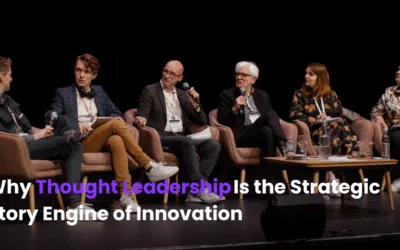15,384 Tools, Slower Growth — and Why That’s a Good Thing
Scott Brinker’s famous martech landscape now lists 15,384 tools. But unlike the hyper-acceleration of past years, this time, growth is tapering — just over 1,500 tools added compared to 3,000 the year before.
This isn’t stagnation. We see this as a signal of maturity.
We’re seeing a shift away from the ‘more is more’ mindset and toward strategic selection and purposeful integration. Marketing and technology leaders are no longer chasing shiny objects — they’re choosing tools that align with their operational goals, tech stack realities, and organisational capacity. This reflects a broader trend we see across sectors: tech-enabled transformation must be deliberate, not decorative.
Quiet Exits, Not Loud Acquisitions
More than half of the martech tools that exited the landscape this year were between 5 and 15 years old — established, funded players that quietly disappeared.
This is not consolidation. It’s correction.
With funding environments tightening and AI raising the bar for performance, the message is clear: tools that don’t deliver real value or can’t adapt to today’s pace will be outpaced — not acquired. We expect this to accelerate in the year ahead as vibe coding and AI-enhanced development takes hold. We can now re-architect and build platforms from the ground up in months not years.
For enterprise and scaleup leaders, this underlines the importance of investing in capability and alignment over accumulation.
DIY Martech is the New Black: A New Frontier for Product-Led Enterprises
There was one standout growth area emerging this year. Internal product management tools — platforms that help companies build, manage, or host their own marketing infrastructure.
This signals a growing appetite among large organisations to move from off-the-shelf to bespoke — building customer-facing tools and internal systems tailored to their workflows, data models, and IP. In fact, this is a trend that we have participated in for our own projects as well as client work. Our content generation tool, ProPresence, emerged through our own design sprint – and several clients have seen massive productivity gains through automation and strategic integration of AI into workflows.
This aligns with what we champion at Disruptors Co: co-designed, context-aware innovation that enables organisations to own their tech advantage, not rent it.
GenAI: From Hype to Implementation
This year, AI finally stepped off the hype cycle and into operations. Particularly in B2B, we’re seeing generative AI move from idea to infrastructure. Most of the customer data platforms that we work with (HubSpot, ZenDesk, Ortto, MailChimp, Salesforce, Segment etc) have all begun integrating AI directly into their platforms – or provide APIs to enrich the backend experience and data.
Content remains the gateway use case, but we’re now seeing expansion into lead scoring, segmentation, and campaign optimisation. For strategic CMOs and revenue leaders, this is a call to rethink team structures — reallocating time from execution to experimentation, from content production to creative direction and strategic enablement.
The Intelligent Data Warehouse: AI’s New Power Base
As mentioned above, AI’s influence isn’t limited to what we see — it’s transforming the back-end, too. The cloud data warehouse is no longer a passive repository; it’s becoming the decision engine of the martech stack.
Marketers are embedding intelligence into their infrastructure, turning static data into real-time insight. This reinforces a larger shift we’re seeing in AI consulting: data strategy is now inseparable from marketing strategy.
What This Means for Change Leaders and Decision Makers
Whether you’re a Visionary CMO in a scaleup or a Strategic CRO in a multinational enterprise, the takeaway is the same:
- Tool count is no longer the badge of innovation — purpose, integration, and business alignment are.
- Internal capability is your competitive advantage — especially when it comes to AI and martech architecture.
- The next frontier isn’t more tools, it’s smarter ecosystems — and teams capable of navigating them.
At Disruptors Co, we help marketing and innovation leaders co-design AI-powered, data-led martech strategies that are built for sustained impact — not just tech adoption. If your team is wrestling with stack complexity, capability gaps, or a roadmap that’s heavy on tools but light on outcomes — let’s talk.



